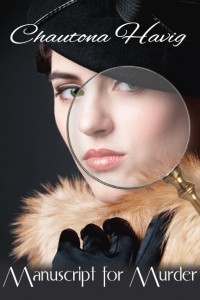If anyone had trouble coming to my blog earlier this week, I apologize for the inconvenience. We had some technical problems, but they seem to be fixed now.
So… I found out that I never posted the review I wrote for Agatha Christie’s The Mysterious Affair at Styles that I read from the library last Summer. I found the review, fully written out, hiding in one of my folders. Therefore, I present you with my belated review:
The Author:
Agatha Christie was born in September of 1890 in Devon, England. Her first book The Mysterious Affair at Styles was published in 1920. Interestingly, it was published first in the United States and several months later, made its debut in England. Mrs. Christie was married twice; first to the unfaithful Archibald Christie, then to Max Mallowan. She had one daughter with her first husband. Mrs. Christie wrote 66 detective novels and 14 short stories. The author is best known for those featuring Miss Jane Marple and Private Detective Monsieur Hercule Poirot. Agatha Christie died in January of 1986 at the age of 95.
Technical Details:
The Mysterious Affair at Styles was, as I mentioned above, first published in 1920 by John Lane in the United States and The Bodley Head in the United Kingdom. (Incidentally, the companies both had the same owner, they were just set up in different countries.) The copy I read, Black Dog and Leventhal Publishers, Inc. published more recently. The book is 224 pages long, divided into 13 chapters.
The Story:
War is raging in early twentieth century England. Mr. Hastings, recovering from his battle wounds, is spending a month at the home of the influential and well-to-do Mrs. Inglethorpe. However, Mrs. Inglethorpe unexpectedly dies and suspicion immediately falls on her husband, who is many years younger than she. However, when Monsieur Poirot begins investigating the case at the request of his friend, Mr. Hastings, he not only clears Mr. Inglethorpe, but spreads the shadow of suspicion on the rest of the family. Did her eldest step-son kill the woman for her money? Or was it perhaps, his wife Mary, who quarreled with the older woman earlier in the day? Then, there’s Lawrence, John’s younger brother. He’s as poor and dependent on Mrs. Inglethorpe as his brother. Perhaps it was he, who wanted to speed up the reception of his inheritance. The more clues that Monsieur Poirot unearths, the more confused Mr. Hastings becomes. He thinks he’s got a talent for deduction and investigation, but this case might lead him to reconsider.
The Writing Style:
The Mysterious Affair at Styles is told through he eyes of Mr. Hastings, a guest at Styles Court. He tells the story in autobiographical style, with Monsieur Poirot receiving the major focus once he appears on the scene.
The book is well written, the style shifting with the moods of Mr. Hastings. When he’s unhappy, the writing grows sarcastic (much what you would expect from an English soldier). When he’s particularly pleased with himself, the narrations clearly shows a bit of vanity. This continues throughout the entire book.
The Characters:
The characters had a variety that was believable and added to the mystery. John Cavendish (the eldest step-son), for instance, has an open personality, concealing very little. Therefore, he talks often to Mr. Hastings about everything that is going on. His brother, Lawrence, on the other hand, is more reserved and shy. Therefore, he’s usually very quiet and few, except perhaps his brother, are aware of his opinions or observations.
All this, of course, is Mr. Hastings perception. Therefore, he considers John an easily made, good hearted friend, while Lawrence he views as slightly suspicious and difficult to understand. He does believe “one could have a great affection for Lawrence” if one could once get to know him, yet when murder appears, it’s obvious that any of his observations and ideas could be very wrong.
As with other mysteries, I will forbear to tell you my favorite character, since I obviously wouldn’t be likely to choose the murderer.
Cautions:
There was some minor language scattered throughout this book, like most of Agatha Christie’s works.
I might also caution about the discussions regarding infidelity. The conversations are tactfully written, with nothing explicit, yet it may be worth expecting ahead of time for some readers.
Conclusion:
I enjoyed The Mysterious Affair at Styles. For a debut novel, Agatha Christie did a wonderful job. This book also serves as Hercule Poirot’s introductory novel, setting the stage for his future cases.
To the KING be all the glory!


